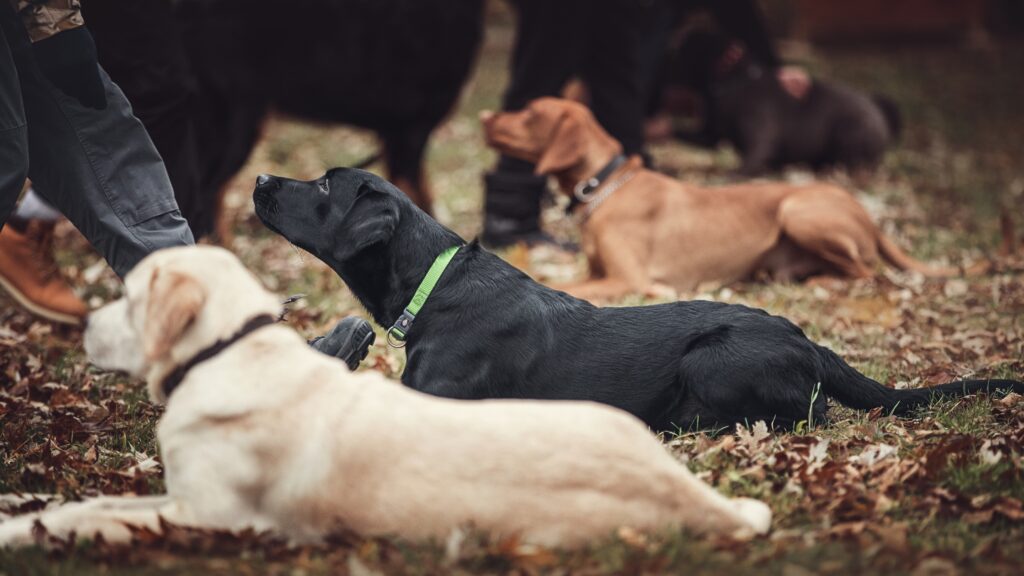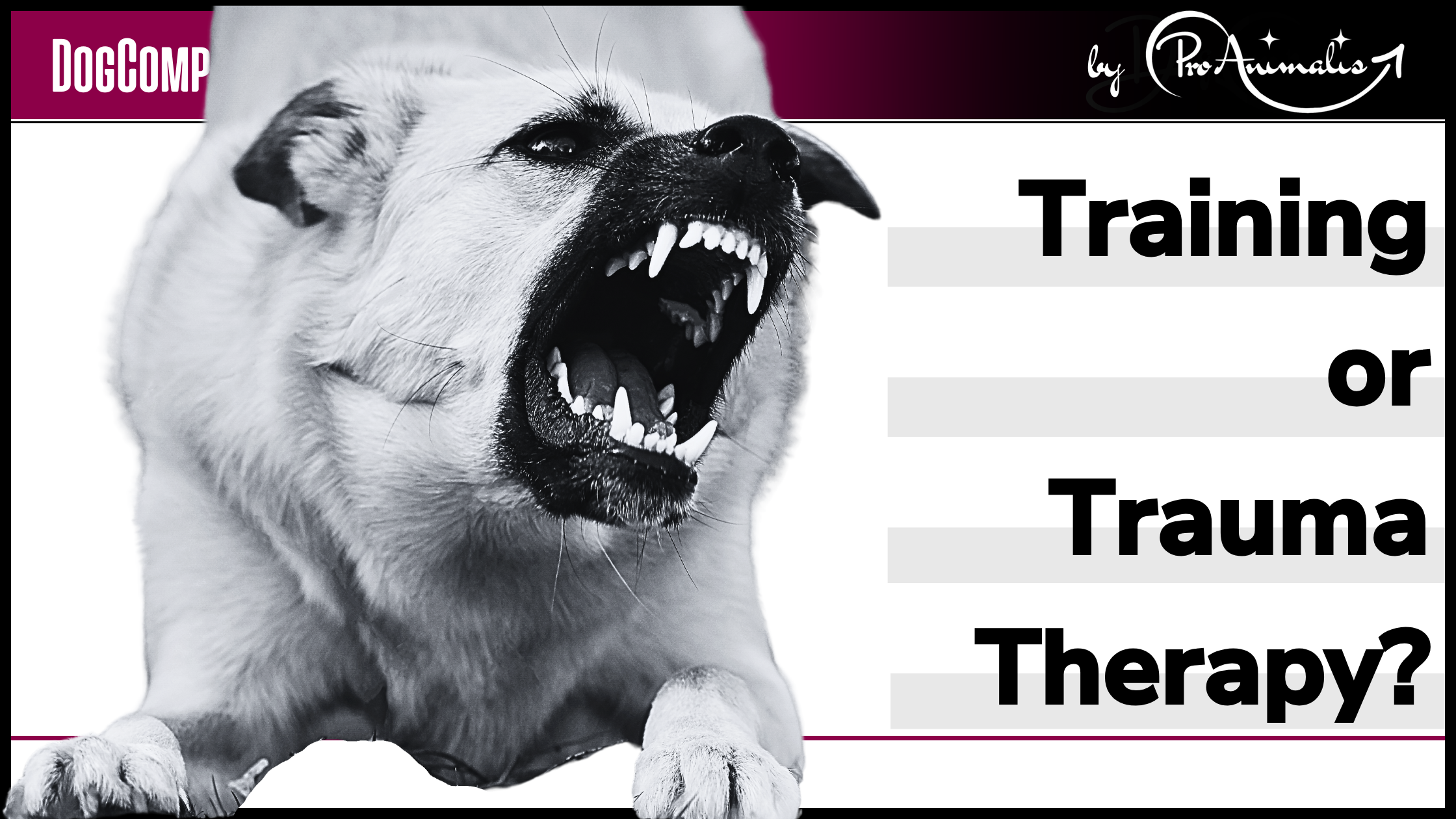Training or Trauma Therapy?
3 Reasons Why Dog Training Isn’t Working (and What You Can Do About It)
Dog training can be quite a challenge, right? When everything goes as expected – great! But when it doesn’t, it’s a whole different story. Unfortunately, some dog owners tend to blame the trainer, the dog school, or even the dog when things don’t work out. The truth is, there are several reasons why traditional dog training methods might not always be the best fit.

Have you tried different training techniques, only to find that your dog still isn’t displaying the desired behavior? Don’t worry, you’re not alone! There are plenty of reasons why training doesn’t always go as planned for many dogs. Here are 3 common causes – and what you can do to fix them.
1. Relationship Issues Between You and Your Dog

In group training, everything works like a charm: your dog listens to your commands, stays calm, and remains focused. But as soon as you get home, chaos breaks loose. Everything goes haywire, and it seems like your dog has completely forgotten the exercises you just practiced. What’s going on?
The issue often lies in the dynamic of the relationship between you and your dog. During training, you have the trainer’s support. Even just their presence can have a significant impact on your dog’s behavior. You’re fully focused on the session and entirely attuned to your dog’s behavior. Positive reinforcement, like treats, plays its part. Additionally, the presence of other dogs in the group provides role models for your dog to mimic.
But when you’re on your own, those supports disappear. You can’t dedicate all your attention to your dog because you have a thousand other things on your mind – and this is where the true connection between you and your dog is put to the test.
👉 Tip: Work on strengthening your bond outside of training sessions. Make sure your dog trusts you, respects you, and recognizes you as a leader. This bond isn’t something you can buy or wish into existence – you have to earn it. Bond-building activities like playing together, long walks, or scent games, combined with the training you’ve learned, can help deepen your connection. Dog training doesn’t end when the paid session is over – it provides you with the tools to continue working on your human-dog relationship.
2. Everyday Challenges: Routine, Communication, and Consistency

Dog training often takes place in a controlled environment—far removed from the real challenges of daily life. Your dog might learn to respond to commands like “sit,” “down,” or “stay” during training sessions, but back at home, the reality often looks quite different. Old habits like jumping on the sofa, begging at the table, or even sleeping in your bed quickly resurface, and it feels like all the training was for nothing.
But this doesn’t mean the training was “all for the birds” (pun intended 😉). Instead, it highlights that training sessions only provide the foundation. What happens afterward depends entirely on how well you integrate the training into your everyday life. The rules you learn in dog school must be adapted to fit your unique lifestyle—with creativity, individuality, and consistency.
Another stumbling block is communication between you and your dog. While you may give clear instructions during training, small misunderstandings can arise in everyday situations. You might unknowingly be inconsistent, your body language might be unclear, or you may fail to enforce learned commands. This can confuse your dog—and leave you feeling frustrated.
A third challenge is getting other household members on the same page. Dogs need clear and consistent rules. If only one person enforces the training while others in the household send mixed signals (like allowing the dog on the couch sometimes but not other times), it becomes difficult for the dog to understand and follow the learned behaviors.
👉 Tip: Think about how to apply what you’ve learned in training to everyday challenges. Adapt the principles to suit your lifestyle and your dog’s personality. Observe not only your dog’s behavior but also your own. Clear and consistent rules are essential—and everyone in the household must follow them. Communication, consistency, and creativity are the keys to a harmonious life with your dog.
3. Traumatic Experiences in Your Dog’s Past

Not all behavioral issues can be resolved through training alone. Some dogs carry traumatic experiences buried deep within their subconscious. These dogs often react to specific triggers—such as certain types of people or animals, particular sounds, or even smells they associate with a bad experience. They may respond with fear, panic, or even aggression.
Classical dog training is often ineffective in addressing these deeply rooted memories and emotions. Training focuses on teaching basic obedience but cannot resolve underlying emotional and mental challenges. In such cases, targeted behavioral therapy is needed to tackle the problem in a personalized and situational way.
For example: A dog that was attacked by a large white dog may begin to react aggressively toward all large white dogs. Or, a dog that was abused by a man with a deep voice may develop a panicked fear of men with deep voices. Sometimes, however, the connections are less clear: A dog might have been startled by fireworks during their first encounter with a large white dog. The fear they experienced may then become linked to large white dogs, even though the true cause was the fireworks.
As you can see, the causes of trauma are varied and highly individual.
👉 Tip: If training doesn’t work, never punish or scold your dog—it might be trauma at play. Remember, even aggressive behavior is often rooted in fear and serves as a form of self-defense. Work with an expert in animal psychology or trauma therapy to uncover the causes and create an individualized treatment plan. The goal is to replace negative experiences with positive ones and help your dog adopt alternative behaviors that they feel comfortable with—so they feel safe and understood.
Conclusion: Dog Training is a Team Effort

When dog training doesn’t work, it’s often not the dog’s fault but rather the approach being used. Relationship issues, daily routines, past trauma, communication difficulties, or lack of consistency within the family are common culprits. But here’s the good news: with patience, understanding, and the right support, you can overcome these challenges.
On this blog, you’ll find more tips, helpful articles, and inspiration to guide you and your dog toward a harmonious life together. Feel free to explore further—or reach out to me with your questions, challenges, or suggestions!




